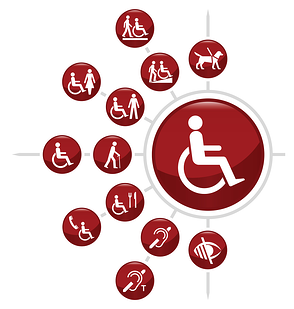Published on: February 10, 2015
 Dealing with a medical disability and the complications it generates in everyday life is extremelystressful. These frustrations can be compounded by various problems in filing for disability benefits.
Dealing with a medical disability and the complications it generates in everyday life is extremelystressful. These frustrations can be compounded by various problems in filing for disability benefits.
These benefits provide essential lifelines for thousands of Americans every year, making up for the lost wages and lifestyle changes that inevitably come in the onset of disability. Often, they become an absolute necessity for family wage earners severely afflicted by disability, such as in circumstances where well-being is determined by wages that are no longer available.
In these situations, seeing an application for disability benefits fail can be a crushing blow on applicants, both mentally and financially. Fortunately, having one application fail doesn’t have to be the end of the world; there are a few key steps you can take when reapplying for benefits through the Social Security Administration (SSA) that will drastically improve your case’s chances of success.
1.) Diagnose Reasons Through the SSA
Naturally, resubmitting your disability case will go nowhere without understanding why your initial application failed in the first place. When it comes to applying for disability benefits, there are three general areas in which to look for weaknesses:
- The disability or condition itself; is it recognized officially by the Social Security Administration’s Blue Book? If your condition is not listed as a disability in this reference base, you won’t be eligible for any benefits through the disability program.
- Qualifying conditions; beyond meeting bare requirements in the SSA Blue Book, your condition will have to be seen as sufficiently limiting to be eligible for benefits. It can’t be a temporary condition, such as a broken arm and must be expected to last at least one year beyond diagnosis or have already lasted one year.
- Evidential support; the third and most common area we see all too often in failed disability applications concerns evidence… or rather, the lack of enough of it. Poor documentation and support for a disability, and how it affects one’s ability to effectively work, will almost always result in denial of the application.
2.) Work Evidence and Occupational Data Into Your Case
When reworking your disability application, it’s absolutely critical to include ample evidence of your disability if you haven’t done so already. This supporting information will help the SSA determine if you qualify for benefits.
The amount of benefits you are eligible to receive is almost entirely based on contributions to Social Security through taxed wages, converted into Social Security credits and is based on your work histroy. To find this, the SSA will complete a duration of work test and recent work test, evaluating your contributions both throughout your entire working life and in the years directly preceding your disability.
For disability benefits through the SSA, you must not only meet conditions in these tests, having contributed enough to Social Security, but also prove that your disability affects your ability to work in the same capacity as prior to its onset. Failure to do so is another of the more common ways applications fail.
3.) Get the Right Information From Your Doctor
Similar to sufficient occupational information and evidence for how your disability affects your everyday life, you’ll want to support your case with official medical documentation from a reputable source in the field. If you want your disability application to succeed, you’ll need more than self-diagnosis, or the opinions of unlicensed professionals.
In some cases, local and state offices in your region may require special medical evaluations with their own providers;, these evaluations are called "Consultative examinations." Just as your credits to Social Security through taxes are essential in your case, proper and extensive medical documentation of your disability, including its perceived length, are integral in any application.
4.) Contact a Local Disability Professional
Probably the smartest thing you can do when reapplying for benefits through the Social Security Administration is contacting a disability expert to help you build your case, collect evidence for your disability and ease communication between yourself and the SSA. Local professionals in your area make reapplying for disability benefits and getting the financial support you need in purusing a disability application a simple matter.
If you haven’t done so already, try contacting a disability professional in your area; these experts can handle all the paperwork, procedures and preparation of your application, and push talks with the SSA and government in the right direction. Don’t risk losing the benefits you need following a disability; contact a professional right away to improve your application’s chances.

